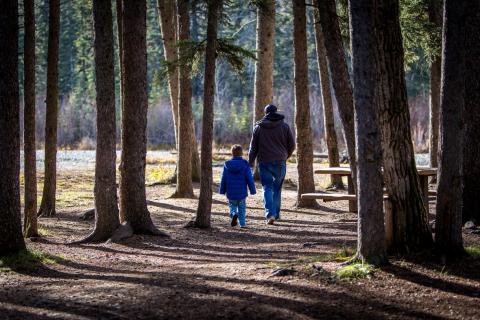Make the Most of Your Walks!

It’s likely you are taking advantage of your at-home learning time with your kids by taking a walk or sharing an online experience. Hopefully, if you are going out, you are following appropriate “social distancing” guidelines. But how can you ensure that the time is well spent and support the learning you want for your children? One way is to become an active questioner, attentive listener and co-learner.
Science education today is based on the idea that students need to learn science by doing science, and at the heart of doing science is an important set of skills:
- Engaging with the material
- Making meaningful, non-trivial observations
- Making connections between observations and explanations of phenomena
- Justifying conclusions with relevant and meaningful evidence
Asking your children questions that encourage them to engage in those skills reinforces their understanding of what they are seeing, and how things are connected!
But what if you aren’t sure of the “right” answers? Engaging in the questions during your walk, or another activity, and helping your children clearly articulate their thoughts is impactful. You may even identify questions that can be jointly researched back at home – to find the “right” answer – which is a valuable extension of this process. It is always OK to say, “I don’t know, but we can do some research and find out!”
For example, you might be on a seaside walk or see an online picture of the rocky shore (like the one below) and ask questions like the following:
- How are seaweeds like the plants in our garden? How are they different?
- How many snails can you see? What do you think they are eating? How would you find out?
Turning a walk or an online activity into a “CSI-like” investigation can enrich the experience, reinforce positive science skills, and be fun for both you and your children. It’s also okay to just let the kids explore on their own, but every once in a while, give this a try!
Looking for some marine education-related resources? Try here!

